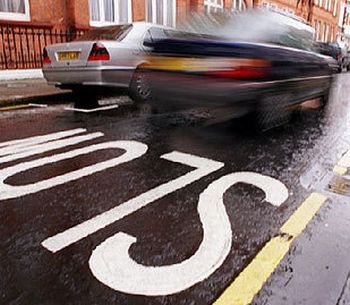US Beats Europe On Mobile Use While Driving

Sixty-nine percent of US drivers admitted to talking on their mobile phones while driving, compared to 21 percent in the UK
About one in three drivers in the US read or sent text or email messages when driving, and most admitted to talking on the phone while driving, according to a study released by the Centres for Disease Control and Prevention (CDC).
The study of drivers aged 18 to 64 in the United States and seven European countries examined two specific types of self-reported distracted driving behaviors, including cell phone use while driving, and reading or sending text or email messages while driving.
More common in US
The results indicated mobile device use while driving is more common in the US than in several European countries. For example, 31 percent of drivers in the US reported that they had read or sent text messages or emails while driving, compared with 15 percent of drivers in Spain.
 CDC researchers analysed data from the 2011 EuroPNStyles and HealthStyles surveys and found that 69 percent of US drivers talked on their cell phones while driving within the 30 days before they were surveyed, compared with 21 percent of drivers from the UK.
CDC researchers analysed data from the 2011 EuroPNStyles and HealthStyles surveys and found that 69 percent of US drivers talked on their cell phones while driving within the 30 days before they were surveyed, compared with 21 percent of drivers from the UK.
“The cell phone can be a fatal distraction for those who use it while they drive,” CDC Director Dr. Tom Frieden said in a statement. “Driving and dialling or texting don’t mix.”
In the United States, the CDC found there were no significant differences between men and women in terms of cell phone use or reading or sending text or email messages while driving, although the age range of the drivers did have an impact on the survey results: A higher percentage of 25- to 44-year-old men and women reported talking on a cell phone while driving than those aged 55 to 64, and a higher percentage of 18- to 34-year-old men and women reported reading or sending text or email messages while driving than those aged 45 to 64.
Distraction danger
“Everyone, of every age and generation, has the ability to make a decision to drive distraction-free,” Linda C. Degutis, director of CDC’s National Centre for Injury Prevention and Control, said in a statement. “It’s especially risky for young, inexperienced drivers – who are already extremely vulnerable to crashes – to be distracted when they are behind the wheel. Answering a call or reading a text is never worth a loss of life.”
As of February 2013, 33 states and the District of Columbia have laws in place restricting at least some teens or new drivers from using cell phones while driving, according to the CDC.
However, the organisation also noted more research would be needed to identify strategies that can decrease distraction-related crashes.
What do you know about IT in Russia? Take our quiz.
Originally published on eWeek.